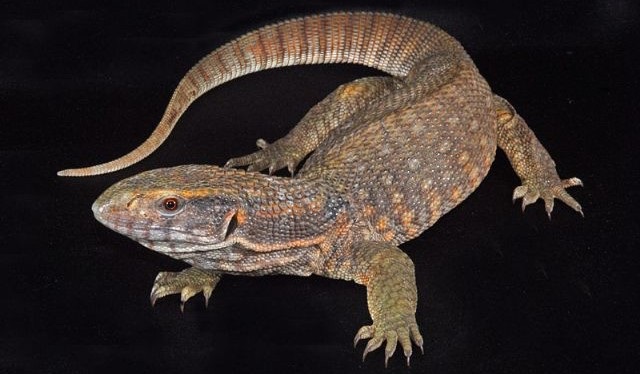If you’ve decided to get a pet lizard, you need to learn about the differences between the types of lizards and decide what aspects are most appealing to you.
Size Matters

Size is one of the major factors to consider when determining what lizard is the right pet for you. Lizards vary greatly in size. Some will grow to be a maximum of several inches long, while others can grow to several feet in length. The lizard’s size will also determine the size of his housing, so think about how big of a house you can provide. For example, will you be able to provide a full-grown Savannah Monitor that can reach 4 feet in length, with a home that is at least 8 feet long, 8 feet high, and 8 feet wide? Consider the amount of space you have for housing and compare it to the amount of space that a full-grown, adult lizard will require. To avoid problems, always assume that your lizard will grow to the maximum length documented for his species.
Attitude Matters
Certain species have a reputation for being friendlier than others. Bearded dragons, for example, are known for their friendly behavior and willingness to be handled. Chameleons, on the other hand, do not enjoy being touched, and it is recommended that they simply be observed from a distance, not handled. If you’re looking for some interaction between you and your pet, some lizards fit the bill more than others, but reptiles in general are not cozy, cuddly pets. Also, remember that every lizard is an individual, so even if that species generally enjoys being handled, your lizard may not. If you give him some space for a while, he may come around, but some lizards will never enjoy being handled.
Whatever lizard you choose, make sure you will be able to meet his care requirements, both now and in the future. By narrowing down your options ahead of time and learning how the needs of different reptiles will fit (or not fit) with what you can provide, you are much more likely to end up with a pet that will bring you pleasure for many years to come.
Captive Bred Morph Lizards
When a human breeds a type of reptile and develops a new color or pattern, it is called a “morph.” However, not all morphs are the result of human involvement. Some occur because of spontaneous genetic mutations in the wild. The first morph produced in captivity was the albino ball python in 1992. Since then, the popularity of morphs has increased. Many hobbyists are anxious to get their hands on the latest variety of their favorite reptile. Some morphs take several years to produce. Many breeders work slowly and carefully to develop new patterns and colorings. However, some morphs get named several times, and some sellers will give new names to even the slightest of variations, all in the hopes of making more money. Be careful to investigate before making a purchase, particularly because new morphs can be expensive, although most varieties become affordable for the average hobbyist within a few years.
Related Articles & Free Email Newsletter Sign Up
5 Fun Facts About Crested Geckos
6 Fun Facts About Red Eared Slider Turtles




Comment here